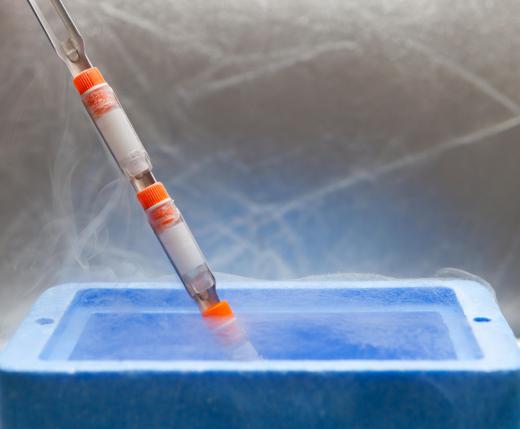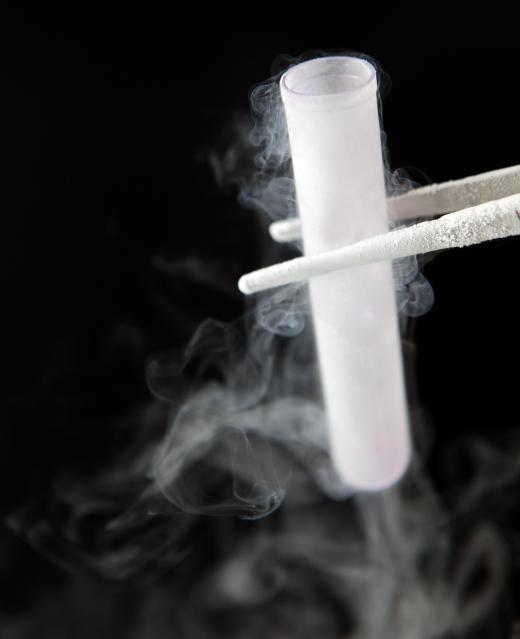What is Nitrogen?
 Mary McMahon
Mary McMahon
Nitrogen is an odorless, tasteless, colorless nonmetallic chemical element which appears in great abundance in the Earth's atmosphere. It also appears in a number of other compounds, and is a vital component of life on Earth for many organisms. In addition to inhaling nitrogen with every breath, most organisms also consume it in their food on a daily basis. Many different forms are commercially available, from the supercoolant liquid nitrogen to nitrous oxide, a type of anesthetic.
The gas is the lightest of the nitrogen group of chemical elements, with the atomic number seven. It is identified on the periodic table of elements by the symbol N. Other elements in the group include bismuth, antimony, and arsenic. Nitrogen forms strong bonds with other elements, because its outermost electron shell is lacking three electrons. These bonds make it very stable, which is why it is sometimes used as a buffer gas.

Approximately 4/5 of the Earth's atmosphere is made up of nitrogen, and the element is the seventh most abundant in the universe. Although most animals cannot use nitrogen in a pure form, they do find it necessary for life, in the form of compounds like amino and nucleic acids. Plants also rely on this element for nutrition, with some plants being well known as nitrogen fixers, meaning that they efficiently trap it for other organisms to use.

The element was first isolated in 1772, although researchers were aware of its existence before this period. Scientists certainly knew that air without oxygen was unbreathable and not flammable, and they were aware of nitric acid, a compound which contains nitrogen, long before 1772. Modern uses for nitrogen include employing it as an inert gas in packaging where oxygen is not desired or is dangerous, as is the case with many foods and explosives.

Pure nitrogen gas presents several risks to human health. In the first sense, it can act as an asphyxiant by displacing available oxygen in the air. This risk is a major issue with liquid nitrogen, which reverts to a gaseous form quickly at room temperature. When working with the liquid, proper ventilation is very important. In addition, the gas cause cause a condition called decompression sickness, common in divers. Also known as “the bends,” decompression sickness is characterized by bubbles of nitrogen and other gases in the blood formed by sudden depressurization.
AS FEATURED ON:
AS FEATURED ON:














Discussion Comments
So how does nitrogen typically move within its Earth system?
I need to know what is the importance of nitrogen to the air.
Nitrogen is a gas.
So is nitrogen a solid, liquid, or gas? That's all i want to know.
Anon46939: Nitrogen is not compoosed of raw materials. It is an element. Therefore, it *is* the raw material.
This doesn't help me because i need to know what raw materials make up nitrogen.
What is the process of converting compressed air to N2 nitrogen gas?
If the compressed air can produce 45 psi up to 100 psi; what is the corresponding percentage of N2 nitrogen gas (i.e. 25%, 50%, 75 percent, and 99.9 percent)?
is the use of nitrogen gas right for the treatment of keloids on the skin?
Post your comments